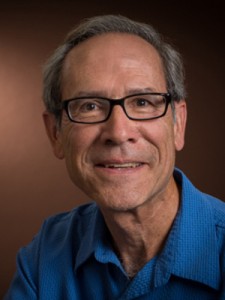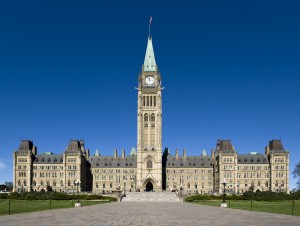 One of the best ways to get a deeper understanding of the materials taught in a classroom is to engage in dialogue with the professor. Many of Ohio State’s faculty are global leaders in their field, so becoming acquainted with one of them can be compared to meeting a foremost expert of the branch of academic study they pursue. In my case, the professor that I have connected with the most has been Professor Edward Malecki of the Department of Geography, one of the most renown urban geographers working today. I took one of his courses during the fall semester called “Global Cities and their Urban Spaces.” After excelling in that class, I began to attend office hours for help on assignments and carrying on discussions based on the materials covered in previous lectures; from that point on, we have been on a first-name basis. I am currently taking another of his classes titled “Making of the Modern World,” which I am enjoying immensely. I am even reading material not covered in lecture, but prescribed to me by him to deepen my understanding of the kinds of research he grapples with. Needless to say, I intend to take his courses on offer whenever possible from now until my final semester.
One of the best ways to get a deeper understanding of the materials taught in a classroom is to engage in dialogue with the professor. Many of Ohio State’s faculty are global leaders in their field, so becoming acquainted with one of them can be compared to meeting a foremost expert of the branch of academic study they pursue. In my case, the professor that I have connected with the most has been Professor Edward Malecki of the Department of Geography, one of the most renown urban geographers working today. I took one of his courses during the fall semester called “Global Cities and their Urban Spaces.” After excelling in that class, I began to attend office hours for help on assignments and carrying on discussions based on the materials covered in previous lectures; from that point on, we have been on a first-name basis. I am currently taking another of his classes titled “Making of the Modern World,” which I am enjoying immensely. I am even reading material not covered in lecture, but prescribed to me by him to deepen my understanding of the kinds of research he grapples with. Needless to say, I intend to take his courses on offer whenever possible from now until my final semester.
Artifacts
STEP and Ottawa
 During my sophomore year, I chose to participate in a program called the Second-year Transformational Experience Program. This program was set up for ambitious sophomore students to deepen their impact in the Ohio State University through service, strengthening relationships with professors, and mentoring freshman on their college experience. As a reward for successful members, a fellowship would be awarded to help students overcome some financial hurdles towards further enriching their time on campus, by studying abroad, obtaining an internship, or conducting research for a thesis.
During my sophomore year, I chose to participate in a program called the Second-year Transformational Experience Program. This program was set up for ambitious sophomore students to deepen their impact in the Ohio State University through service, strengthening relationships with professors, and mentoring freshman on their college experience. As a reward for successful members, a fellowship would be awarded to help students overcome some financial hurdles towards further enriching their time on campus, by studying abroad, obtaining an internship, or conducting research for a thesis.
With my fellowship, I have chosen to pursue a study abroad internship offered through Ohio State’s Political Science department. Upon acceptance into this program, I will intern with a member of the Canadian Parliament in Ottawa for the months of May and June. On top of the experience of living and working in a world-class foreign capital city (albeit approximately 50 miles away from the US border), I would be able to further groom my resume for a possible job in the US federal government with intern experience in a legislative body of a foreign government.
The Alexander Hamilton Society
 One of the nice things about attending such a large university is the vast diversity of interests that are able to be represented in one entity. There are literally hundreds of clubs and groups, formal and informal, that meet regularly on this campus. With this in mind, I set out to look for a club that discusses issues of national security or international relations. Out of the several clubs on offer here, I have become a member of the Alexander Hamilton Society, a nationally recognized chapter of an organization known for discussing the pressing geopolitical issues of the day, like Russian annexations of Crimea and Eastern Ukraine, the TPP trade deal, the Syrian refugee crisis, and the Iranian nuclear deal that has recently been reached.
One of the nice things about attending such a large university is the vast diversity of interests that are able to be represented in one entity. There are literally hundreds of clubs and groups, formal and informal, that meet regularly on this campus. With this in mind, I set out to look for a club that discusses issues of national security or international relations. Out of the several clubs on offer here, I have become a member of the Alexander Hamilton Society, a nationally recognized chapter of an organization known for discussing the pressing geopolitical issues of the day, like Russian annexations of Crimea and Eastern Ukraine, the TPP trade deal, the Syrian refugee crisis, and the Iranian nuclear deal that has recently been reached.
What made this club stand out from the others is that, unlike most debate or foreign affairs clubs I have attended, it features a truly diverse group of members from all walks of life and all shades along the political spectrum. I came into Ohio State as a hardened democrat and liberal, but after a year of attending these meetings and listening to the cases for certain courses of action on issues made by my conservative colleagues, I have definitely tempered my resolve with the liberal way of thinking and have become more moderate as a result. This club, more than anything else I have thus come across, has taught me to find balance when making a decision and never shut out someone’s opinion lest I block my thought s from important outside information.
Deciding on a Career
For most of my freshman year, I seemed to swimming in a seas of uncertainty. The prospect of choosing one particular career path and the right bundle of majors and minors to correlate with that is a daunting task. I spent several months bouncing around ideas of becoming a professor after I graduate, or possibly pursuing a financial track and become a businessman, or even a high school teacher. These ideas were no more than listless attempts to figure out what I was truly interested in. I mostly loaded up my freshman year schedules with General Education courses to avoid having to take major courses for some major that I may or may not have a total interest in. I figured I was talented and enjoyed studies in the social sciences, and filled up my sophomore schedule with a broad array of classes to determine, once and for all, what would typify my college experience.
It wasn’t until I took a class during the fall semester my sophomore year called International Studies 3550: Introduction to Intelligence History, taught by a former employee of the CIA, that I began to recognize my calling. From the point of this recognition through the present day, I believe I have what it takes to pursue a career within either the defense department or the US Intelligence Community within the federal government.
Spending the Night at the SEL
 The Science and Engineering Library located on 18th Avenue is renown campus-wide as the go-to building to get some serious studying underway during late-night hours in preparation for an exam the next day. Though I forget the exact day, I knew I had a statistics exam the following day and my whole dorm building seemed to be too full of life to conduct any meaningful memorization. My roommate made my dorm room a less-than-ideal area to study, so I made the walk over to the SEL, claimed some territory in the form of a small table like some sort of 21st century pioneer, and booted up my laptop to review notes.
The Science and Engineering Library located on 18th Avenue is renown campus-wide as the go-to building to get some serious studying underway during late-night hours in preparation for an exam the next day. Though I forget the exact day, I knew I had a statistics exam the following day and my whole dorm building seemed to be too full of life to conduct any meaningful memorization. My roommate made my dorm room a less-than-ideal area to study, so I made the walk over to the SEL, claimed some territory in the form of a small table like some sort of 21st century pioneer, and booted up my laptop to review notes.
I had never stayed up past midnight in pursuit of academic achievement at any time throughout high school, and yet, as the clock struck over into the next day, I knew I had joined some elite club of other motivated individuals who would put down the time and effort, whatever whenever necessary, to accomplish their goals. I stayed in the library for five hours straight. I sifted through hundreds of slides of Powerpoint lectures on Carmen. I must have taken the practice exam three times. And wouldn’t you know it? I got an A on my first exam.
Silencing the Past
During the fall semester of my freshman year, I was a history major. The very first book I had to read for college was assigned to me by Professor Stephanie Shaw for History 2800: An Introduction to Historical Thought, one of the first required courses any history major attending the Ohio State University must pass. It was titled, “Silencing the Past: Power and the Production of History.” Though I am no longer a history major, the lessons that I learned through reading that book have fundamentally changed my perspective on how I look at events that take place in the past.
Just like the present and the future, the past can be changed. History, humankind’s collective understanding of previous events, can be recorded, falsified, and destroyed to achieve the political goals of a person or an influential group. The only authority on what is true or false comes from dedicated people willing to delve deep enough into the surviving artifacts of all kinds to produce what they think is the truth. Defining and re-defining history has always been, and will continue to be, a cat-and-mouse game. This lesson has instilled upon me a healthy level of skepticism to help verify that any historical work I come across both during and after college is faithful as it can be to the truth.

